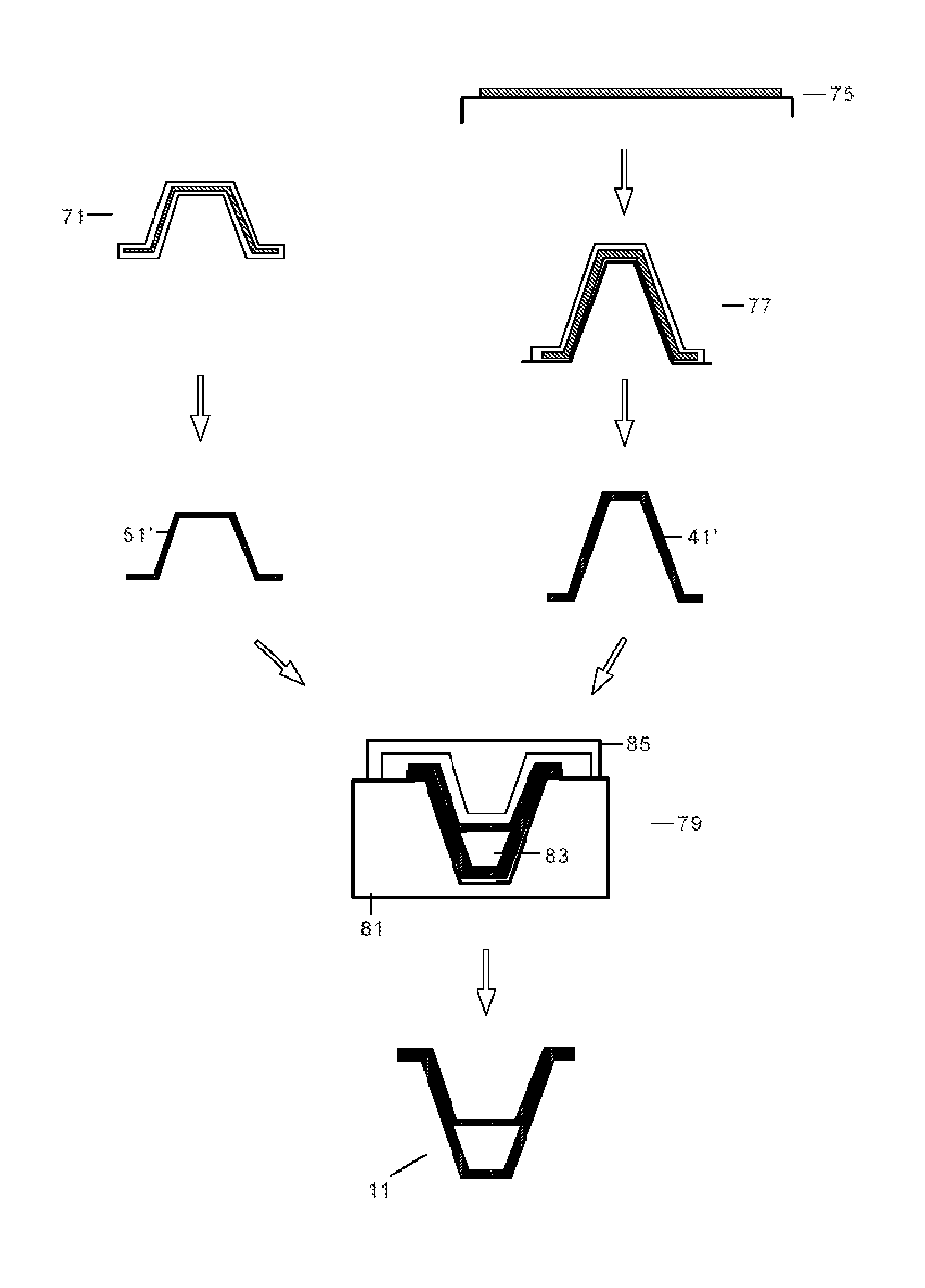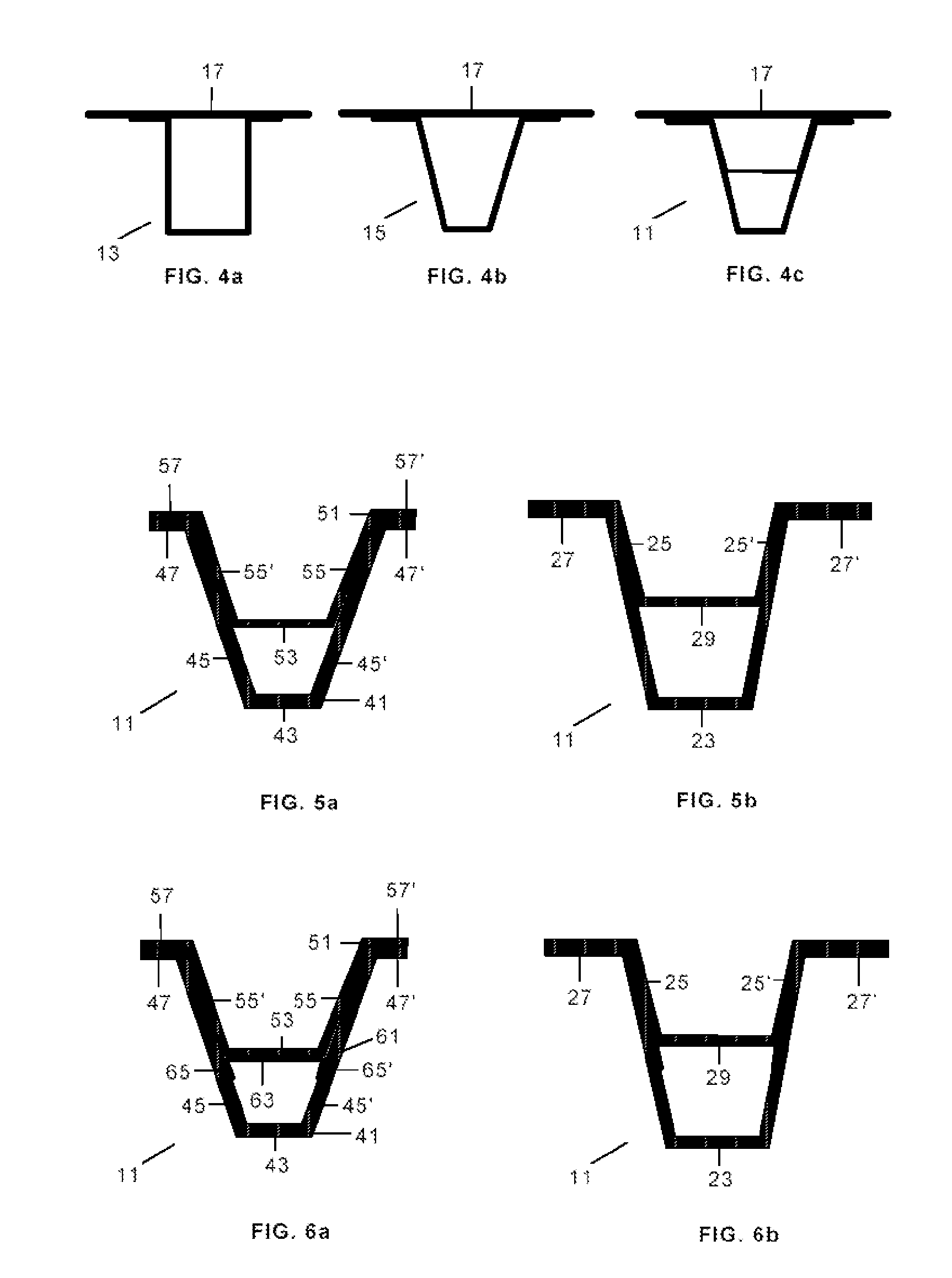Aircraft fuselage frame in composite material with stabilized web
a composite material and stabilized web technology, applied in the direction of transportation and packaging, other domestic articles, efficient propulsion technologies, etc., can solve the problems of difficult to compete with machined metallic, and inability to meet the requirements of load frames. , to achieve the effect of reducing load requirements
- Summary
- Abstract
- Description
- Claims
- Application Information
AI Technical Summary
Benefits of technology
Problems solved by technology
Method used
Image
Examples
first embodiment
[0063]According to the manufacturing procedure under this invention, and as illustrated in FIGS. 5a and 5b, the first segment 31 of the frame with the cross section 11 is manufactured by joining an internal element 51 with closed omega-shaped section, formed by one head 53, two webs 55, 55′ and two feet 57, 57′, to an external element 41 with closed omega-shaped section, formed by one head 43, two webs 45, 45′ and two feet 47, 47′.
[0064]Thus the webs 25, 25′ of the resulting frame have a span with the thickness resulting from joining the webs 55, 55′ of the internal element 51 and the webs 45, 45′ of the external element 41, and another span with the thickness of the webs 45, 45′ of the external element 41. The feet 27, 27 of the resulting frame have the thickness resulting from joining the feet 57, 57′ of the internal element 51 and the feet 47, 47′ of the external element 41. Finally, the stiffening element 29 corresponds to the head 53 of the internal element 51. This cross secti...
second embodiment
[0065]According to the manufacturing procedure under this invention, and as illustrated in FIGS. 6a and 6b, the first segment 31 of the frame with the cross section 11 is manufactured using a third element 61 formed with layers of composite material to close off the corners between the internal element 51 and the external element 41. The central zone 61 of this element is joined to the head 53 of the internal element 51 and the end zones65, 65′ to the webs 45, 45′ of the external element 41.
[0066]Following is a description of a first embodiment variant of the procedure, according to the invention, to manufacture a segment of a frame with the internal element 51 and the external element 41.
[0067]In a first stage 71, a preform 51′ of the internal element 51 would be manufactured and would be cured using an RTM (Resin Transfer Moulding) process (it is also feasible to do it with pre-impregnated material using a suitable tool). It is well known that this process uses a closed, pressuriz...
third embodiment
[0072]In a third embodiment variant of a procedure, according to the invention, to manufacture a segment of a frame with the aforementioned internal element 51 and external element 41, their preforms 51′, 41′ would be manufactured separately and, after a process of hot forming and duly arranged in appropriate tools, they would be co-cured together in a curing cycle in autoclave.
PUM
| Property | Measurement | Unit |
|---|---|---|
| thickness | aaaaa | aaaaa |
| length | aaaaa | aaaaa |
| strength-to-weight ratio | aaaaa | aaaaa |
Abstract
Description
Claims
Application Information
 Login to View More
Login to View More - R&D
- Intellectual Property
- Life Sciences
- Materials
- Tech Scout
- Unparalleled Data Quality
- Higher Quality Content
- 60% Fewer Hallucinations
Browse by: Latest US Patents, China's latest patents, Technical Efficacy Thesaurus, Application Domain, Technology Topic, Popular Technical Reports.
© 2025 PatSnap. All rights reserved.Legal|Privacy policy|Modern Slavery Act Transparency Statement|Sitemap|About US| Contact US: help@patsnap.com



